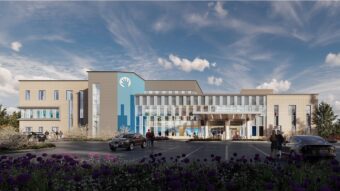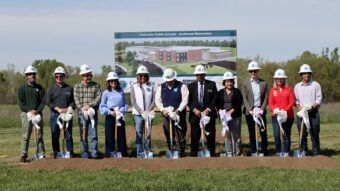The commercial real estate market is soaring in Louisville, and you can cite plenty of reasons why: The city is located within a short drive to a large swath of the country. The UPS Worldport makes Louisville a hub for shipping and distribution activity. A diverse variety of businesses call the region home.
But what about one other big reason? Bourbon.
It’s true. The Kentucky Bourbon Trail, centered in Louisville, has become a top destination for tourists, and has brought an ever-growing number of visitors to this city. That has led to an increased amount of CRE activity in downtown Louisville, with new restaurants, shops and entertainment options popping up throughout the CBD.
CBRE recently studied the impact that bourbon is having on the Louisville CRE market. According to CBRE, the rising popularity of bourbon has boosted new hotel construction and multifamily development in Louisville. At the same time, distillery experience locations in the areas of West Main Street, East Main Street, NuLu, Butchertown and Phoenix Hill have spurred developers to transform formerly derelict buildings into working distilleries and visitor centers.
How popular has bourbon become in this part of the country? CBRE said that as of October of 2019, there are about two barrels of bourbon aging in Kentucky for every man, woman and child living in the state. That’s up from 1.5 barrels a person two years ago.
The heart of the bourbon tourism industry is in Louisville. The Frazier History Museum on West Main Street in the city is home to the Kentucky Bourbon Trail Welcome Center, the official starting point of the Kentucky Bourbon Trail. That trail is a road-based tour leading visitors to distilleries dotting Kentucky. Louisville also boasts its own Urban Bourbon Trail, in which tourists follow along with a bourbon passport and sample drinks and food at locations throughout the city.
CBRE reported that since 2013 nine new bourbon/spirits distillery experience locations have opened in Louisville neighborhoods. These facilities have drawn plenty of tourists. CBRE reported that in 2018 Louisville saw 325,773 distillery visitors. That is up from 237,399 in 2017 and represents a three-year attendance growth of 139 percent.
Not surprisingly, the rise in tourism has resulted in more hotel rooms in Louisville. CBRE said that in 2018, developers added 901 new hotel rooms to downtown Louisville. In 2019, that number dipped to 315, which is still more new hotel rooms than in 2016 and 2017 combined.
The Omni Louisville Hotel opened in March of 2018, a 30-story property that dramatically altered the Louisville skyline. In July of this year, it was announced that a dual-branded Hyatt House and Hyatt Place hotel is in the planning stages near the Kentucky International Convention Center. This would be Louisville’s first Hyatt House.
Currently, there are 286 hotel rooms under construction and another 858 planned for Louisville’s downtown districts.
The bourbon industry has had a similar impact on Louisville’s multifamily market. According to CBRE, Louisville saw the addition of 484 new multifamily units to the CBD in 2018. CBRE said that 691 units have either been added in 2019 or planned for the CBD.



